-
Legacy Member

Help me identify this British NOD (Night Vision Telescope)
Hello fellow collectors,
In my ever growing collection of british night vision sights from the cord war area, i recently got a nice deal on an old NOD in some very bad condition, on that evil internet auction platform that is sucking up all my money  .
.
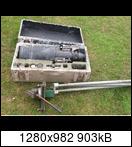
Luckily for me, most of the bad stuff was only dirt and some minor corrosion on the outer housing. So after some well cleaning and careful disassembly (it wasn't running and a broken cascade tube was the obvious part that just needed a replacement) i got it back into good shape and fully working condition.
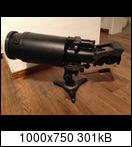
But now comes the part where I would appreciate your expertise. The previous owner of the telescope passed away and the seller that sold it of its completely white corroded rank pullin case and a self build metal tripod, only know that the owner had used it for hunting and that it was probably ex british military.
The only large british made NOD for the MoD I can find resources and pictures on, is the Telescope, Straight, Image Intensified, Cased. L4A1.
But mine seems to be an early version, but lacking any name or data plate and with only a serial number (328), I cant find any further info. So let me list all the info I can give and some pictures. Who knows what new knowledge i can get from you 
- The telescope is made from rank precision/rank pullin around 1977. This date stamp can be found on the 3 axis mount that is very similar in appearance like the on from the L4A1 NOD
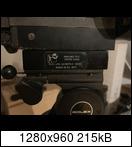
- The whole mount foot is labeled with two rank precision data plates. One with an NSN number 5855-99-965-2004 and typical british L1A1 designation (Levelling Tripod Assembly L1A1) SS65/MK1
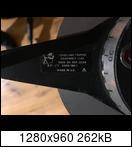
- Could SS65 be the designation for the scope or just the mount. SS numbers like SS20 as civilian designation for the IWS seems to be a classic rank precision product code or number
- while disassembled I found out that it uses the exact same rear lens assembly that the SS20/IWS uses and they are fully interchangeable.
- the telescope itself has a mount with adjustable windage and elevation prior to the 3 axis pan and tilt head. This is the first clue that indicates to me, that the scope might also be intended for use on some weapon system. Perhaps similar to the US AN/TVS-2 that was used as night sight on the Browning .50cal ?
- a very awesome feature of this scope is, that it has a build in graticule. A dot matrix with several numbers for (i guess) range estimation or what I believe, range compensation for use as a weaponsight. The graticule if illuminated onto the tube kinda like on the later AN/PVS-4 an can be turned on/off separately from the cascade tube itself. It even can be adjusted for brightness. This is for me the second hue, that the telescope might also be intended as weaponsight.
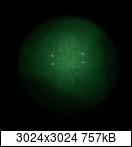

-the telescope uses the same three stage cascade tube like all the later SS20/IWS PVS-2 night scopes. Because it had build in the dummy oscillator, the original tube (sadly missing any numbers or designations) must had build in ABC and oscillator. At least replacing it with a new P8079HP made it run perfect again.
Pictures:
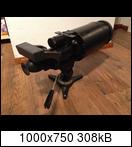
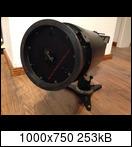
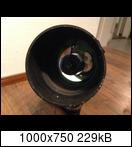
OK now its your part. Do you know the designation or the telescope from rank precession?
Was it in military service in the british forces and if so, does anyone know of manuals or the MoD designation?
What was it designed for mainly? Observation like the L4A1 NOD or as weaponsight with its graticule?
In advance, thanks for your help. I'm curious what you guys come up with.
-Elphiel
Information
 |
Warning: This is a relatively older thread
This discussion is older than 360 days. Some information contained in it may no longer be current. |
|
-
-
01-14-2019 06:18 PM
# ADS
Friends and Sponsors

-
The tripod first...... I can tell you that that was a general issue tripod used all with several types of optical instruments seemingly everywhere. They were also used in instrument workshops during calibration tests etc etc. The panning head was clearly a Rank Precision made adaptor to adapt the IIW to the tripod. I'll come back with some more observations. But the ocular brightness is so that you can dim down the brightness of he image in order to retain your own ocular optical night vision when your head leaves the telescope. Never seen the head guard before that keeps your eye at a set distance from the ocular lens. After all, that's why the IIW has an eye cup!
More later
-
-
Contributing Member

I think it is the SS32 manufactured by Rank. Could be wrong of course long time ago, mounted on Scouts on the border L3A1? Had the pain in the arse batteries used on the Twiggy and other fiascos of the time IMHO.
Last edited by Gil Boyd; 01-15-2019 at 02:46 PM.
'Tonight my men and I have been through hell and back again, but the look on your faces when we let you out of the hall - we'd do it all again tomorrow.' Major Chris Keeble's words to Goose Green villagers on 29th May 1982 - 2 PARA
-
-
Legacy Member

Ah awesome. Thats it Gil. Do you know where i could get a copy of that manual or would you like to send me a copy?
Interestingly the rubber pad for the forehead is not in your manual pictures but on mine it does not look like it was added later but more like it was designed this way. Perhaps a later version, who knows. Also perhaps added for long time observation. Its very comfortable to just lean your head onto it. The brightness control here is just for the graticule and I guess its to adjust to the general brightness of the observed image. Mechanical it still easy to fit the later pattern battery caps with brightness regulator but thats not how it came so will stay this way.
Now where i can get a Wombat as accessory for that scope 
-
-
Legacy Member

Elphiel
Gil will probably post this anyway, but there is a reprint on eBay (which is the image Gil posted).
-
Thank You to David TS For This Useful Post:
-
Contributing Member

Davids right its £12 on that site, and a necessary piece to go with that sight. When you get round to it, I can PM you the easy 9VDC PP3 alternative wiring which is simple to replace those bloody useless batteries unless you have a new run of course.
The rubber bar on the back was solely for the gunner to keep his forehead against it whilst travelling on the NI borders "smooth" culvert driven roads lol. There appears to be mention of it being on Wombats, certainly not in my Regiment but who knows what others may have done, can't see the purpose on a wombat that had a .5 round to be fired first, when a target was acquired. That night sight wouldnt have had the focal length to be of use in fighting tanks at distance IMHO
Last edited by Gil Boyd; 01-16-2019 at 10:53 AM.
'Tonight my men and I have been through hell and back again, but the look on your faces when we let you out of the hall - we'd do it all again tomorrow.' Major Chris Keeble's words to Goose Green villagers on 29th May 1982 - 2 PARA
-
Thank You to Gil Boyd For This Useful Post:
-
Very interesting to me too! The last of the WomBAT's had the SS20 IIW mounted onto them. The II tube part looks very similar to the SS20 tube and I suspect that the robust IIW tube is probably identical - as is the ocular lens set.
The big 7.5v large diameter batteries are still available (we used to call them Jamaican vibrator batteries) from someone on this forum (anyone remember who?) and the knobs are the same as SS20 too. No doubt the battery cap is the same and easy(?) to convert to ABC spec (auto brightness control) but why bother. Same inverter mech too.
-
-
Contributing Member

Peter,
The problem with Rank was they used the same parts companies for all their models, so ALL the knobs switches for good housekeeping sense were the same branded. I went on a NVG course with them in the early 80's as we drifted away from the Russian Gen1 stuff at the Home Office, and what was interesting was the numbering of their latest night vision made little sense.
Gen1 stuff at the Home Office, and what was interesting was the numbering of their latest night vision made little sense.
Anyway, I knew the image shown above on the thread was their later model the SS32/L3A1 but I couldn't find my course notes on it, in Army speak but found the actual manual on that website for sale. They are like Rocking horse **** and well worth the £12 the seller was asking especially if you had the sight. Made popular by the Royal Armoured Corps on their smaller reconnaissance vehicles including the Scorpion/Scout as stated, but with a lot of our stuff during NI, it hadn't been correctly thought through, consequently these NV devices with no focal length were given to the wrong units.
As they developed the watch towers on the border in the mid to late 80's Twiggy and others came along, again absolutely no use whatsoever, for the task in hand, with no focus or times magnification to expel any suspicious activity at any range, especially targets as they crossed into NI from Eire on the miriad of covert crossing points.
We moved over to Delft lasers which were quite effective with a brilliant additive of the day,where you could focus the laser on a target or widen it, and illuminate the target and then use NVG's to identify it more correctly. Speaking to one of the lads last month, they still have them and swear by them as the tubes are still readily available.
Last edited by Gil Boyd; 01-17-2019 at 11:41 AM.
'Tonight my men and I have been through hell and back again, but the look on your faces when we let you out of the hall - we'd do it all again tomorrow.' Major Chris Keeble's words to Goose Green villagers on 29th May 1982 - 2 PARA
-
-
Yes, the RP tubes were Delft who are now part of Phillips at Eindhoven. I'm sure EEV will/might supply spare parts if they have much in stock.
-
-
Contributing Member

EEV are a cracking company, now Marconi and have mastered the small replacement tubes supply. Like you I am sure they can supply any parts for the L3A1. I think they still operate a manufacturing base in Chelmsford, for how long who knows as Brexit bites!
Time for us to re invent the wheel and do our own thing better, as there is so much talent in this country sitting on their hands as external forces continue to supply NVG's, time to open Pandoras box me thinks!!
English Electric Valve Co
'Tonight my men and I have been through hell and back again, but the look on your faces when we let you out of the hall - we'd do it all again tomorrow.' Major Chris Keeble's words to Goose Green villagers on 29th May 1982 - 2 PARA
-
.

























 PM
PM










